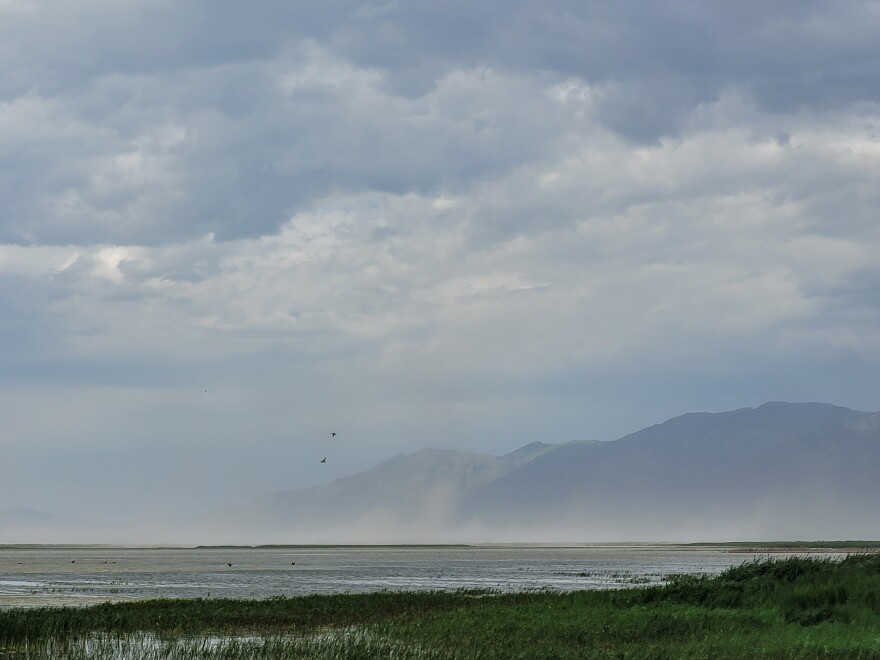Concerns over health impacts of toxic dust blowing off of Great Salt Lake’s exposed lake bed are growing as research continues to link air pollution to chronic disease and premature death.
Dr. Brian Moench, board president and co-founder of Utah Physicians for Healthy Environment, spoke about health effects of air pollution at the People’s Great Salt Lake Summit this month.
“Air pollution is the number one environmental cause of human deaths contributing to four of the five leading causes of death which are heart disease, lung disease, strokes and cancer,” Moench explained.
Salt Lake City is ranked among the worst US cities in terms of spikes in ozone and airborne particulates. Currently, car exhaust is the largest contributor to the Wasatch Front’s air pollution, but Dr. Moench said Great Salt Lake’s contribution to damaging airborne particulates is growing.
“About 15 years ago, we didn't really have any dust storms from the Great Salt Lake, but now we're having about 15 a year. And this is what we're really worried about,” said Moench.
Inhaling airborne particulates can lead to chronic inflammation, a hallmark of aging and foundation of numerous chronic diseases. Toxic substances contained in dust blowing off the lake bed can compound the dust’s harmful health effects.
“In addition to the particulate matter in that cloud of free radicals, are neurotoxic and heavy metals, mercury, lead, cadmium…agricultural pesticides and even microorganisms, and some of their products like cyanotoxins,” Moench said.
Despite record snowpack partially refilling Great Salt Lake, it’s expected to continue to shrink in the future. Dr. Moench pointed to other drying lakes as a warning for what may happen in Utah if we don’t act quickly to reverse water level declines.
“The Aral Sea tells us what may happen to the Wasatch Front. It was the fourth largest lake in the world in about 1960, and then all the water was diverted, so now it’s one tenth of its previous size,” Moench said. “Studies now show that virtually every day about 200,000 tons of toxic dust and salt are blown throughout the region. Life expectancy [of residents] has dropped 13 years.”



